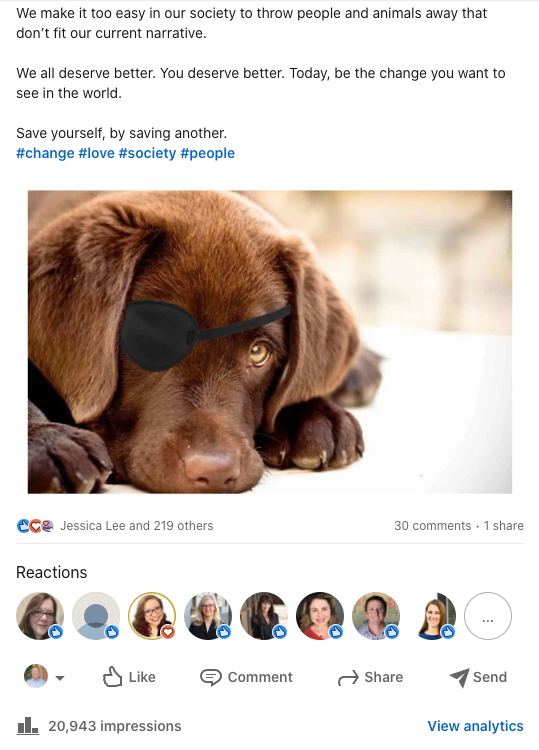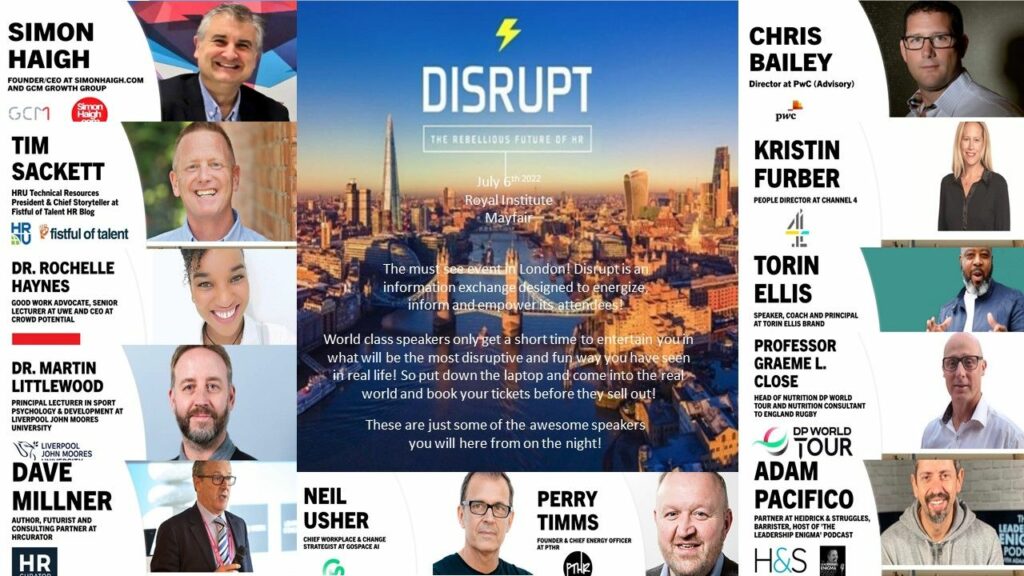It started out a couple of years ago as “Broetry” a writing trend where mostly men did what I like to call “Hustle Porn” on LinkedIn. Some wannabe tech dude leaning on the hood of an expensive sports car telling you to work as hard as him and you can get the fancy sports car as well.
Mostly young, attractive, social media influencer types have quickly turned hustle porn/broetry into something I’m sure we even have a name for yet! Maybe it’s “Empathy Porn” or “Positive Porn” I’m sure one of these folks will come up with a great title! This LinkedIn viral content has a definite flavor and structure to it. It’s so similar in its style that it’s actually funny once you’re able to identify it.
Whatever it is, it’s not professional content, which I think the vast majority of folks come to LinkedIn for, but you also can’t argue the successful viral nature of this type of content! It’s so popular you start to question why people actually come to LinkedIn! Are we sure it’s a professional networking site?!
This isn’t a LinkedIn bashing post. I love LinkedIn. I use it every day. I don’t like this new type of viral LinkedIn content that basically delivers zero value to anyone except the creator, whom I’m guessing is at a level of narcissism that is incomprehensible!
What does the LinkedIn Algorithm love in a piece of content?
- Positive. Maybe overly positive.
- A certain structure to how it’s written (see example below).
- A selfie and it helps if you’re ridiculously attractive and show some skin, but not too much skin.
- Some emoji bullet points towards the bottom.
These posts are getting hundreds of thousands, if not millions, of interactions in some cases! Thousands of comments.
Will all of this interaction and comments, you must think, “Tim, you’re just a hater. These people must be sharing some amazingly valuable content!” No. They mostly share personal stories, most I’m sure are made up, that has a narrative of overcoming and succeeding, lifting yourself up and succeeding. Failing and then succeeding, etc.
One of the best I’ve seen at creating this content is Cat Philip. Most likely, you’ve seen her content as the LinkedIn Algo loves Cat! Why? Well, she’s a young twenty-something who’s just trying to make it in the business world as a woman, but people keep judging her, but she’s not going to allow that to stop her! I mean, at least that’s pretty much every post, along with a selfie!

No judgment. Cat is killing it on LinkedIn. Her business is social media, and she’s good at it. It’s just not the content I thought I would ever see on LinkedIn. She is far from the only one, there are now millions of LinkedIn users doing this content in different ways, but the structure is almost always the same! I saw a Dad do one on his young daughter and her struggle, same exact format, same viral spin with the algorithm.
Another commonality of these viral positive porn posts is that almost always, they are done by someone in the “business.” The business of making or wanting to make viral content. Some sort of marketing person, influencer, speaker, author, bullshit life coach, someone selling essential oils, etc. It’s not about truly selling the “story” it’s about selling themselves. And it’s really effective if you want to make a viral post!
Can a normal person create a LinkedIn Viral post?
Yes! Because I made one up, and it worked!


So, this post was up for less than 24 hours, and I deleted it because I had so many friends in real life who know me who were making such nice, awesome comments about me as a person! And it was all fake! I didn’t want to embarrass anyone, I was just testing the algorithm!
I mean, a Homeless Puppy with One-eye! You can’t make that up! Well, yes. Yes, you can make it up, actually!
What did I learn about my little LinkedIn Viral Algorithm Test?
- Many people have figured out how to get the LinkedIn Algorithm to pick up their post.
- My own post wasn’t as popular but still strong because I didn’t make it personal enough about myself with a puppy. Also, because I’m a middle-aged, average-looking dude. Very attractive people have an easier time going viral, which is why I chose a cute puppy!
- It’s wrapped in “positivity” and “overcoming the struggle,” but that’s not what it’s really about.
- The format is fairly easy to follow, and it tends to work better from mobile, but you can create the post on word/Google docs and copy and paste it.
- If your audience knows you, I mean truly knows you, there will be a lot of favorable reactions since they believe what you’re putting on LinkedIn. And honestly, many of these folks believe their own bullshit. That’s very similar to the hustle porn culture.
- For some odd reason, the algorithm loves emoji bullet points 2/3s of the way down your post.
- I think LinkedIn as a platform is worse for this type of viral content.
I was speaking at an HR conference, and I was telling some people this story and how I created it. Across the board, 100% of people all immediately recognized the content I was describing, and all didn’t like it. But, many also admitted to interacting with this type of content because we all actually love a positive, uplifting story! We also love when people bare their souls, even if it is a bit weird to do in a professional setting.
I get frustrated because really great professional content gets lost in this type of algorithm environment. People I follow and respect share some great stuff, and instead, the algorithm feeds me homeless one-eyed puppies because everyone else, apparently, wants homeless puppies!
FWIW – to the audience who interacted with my test and thought I was some amazing person, I apologize! I mean, I am amazing, but I’m not a homeless one-eyed puppy amazing!



